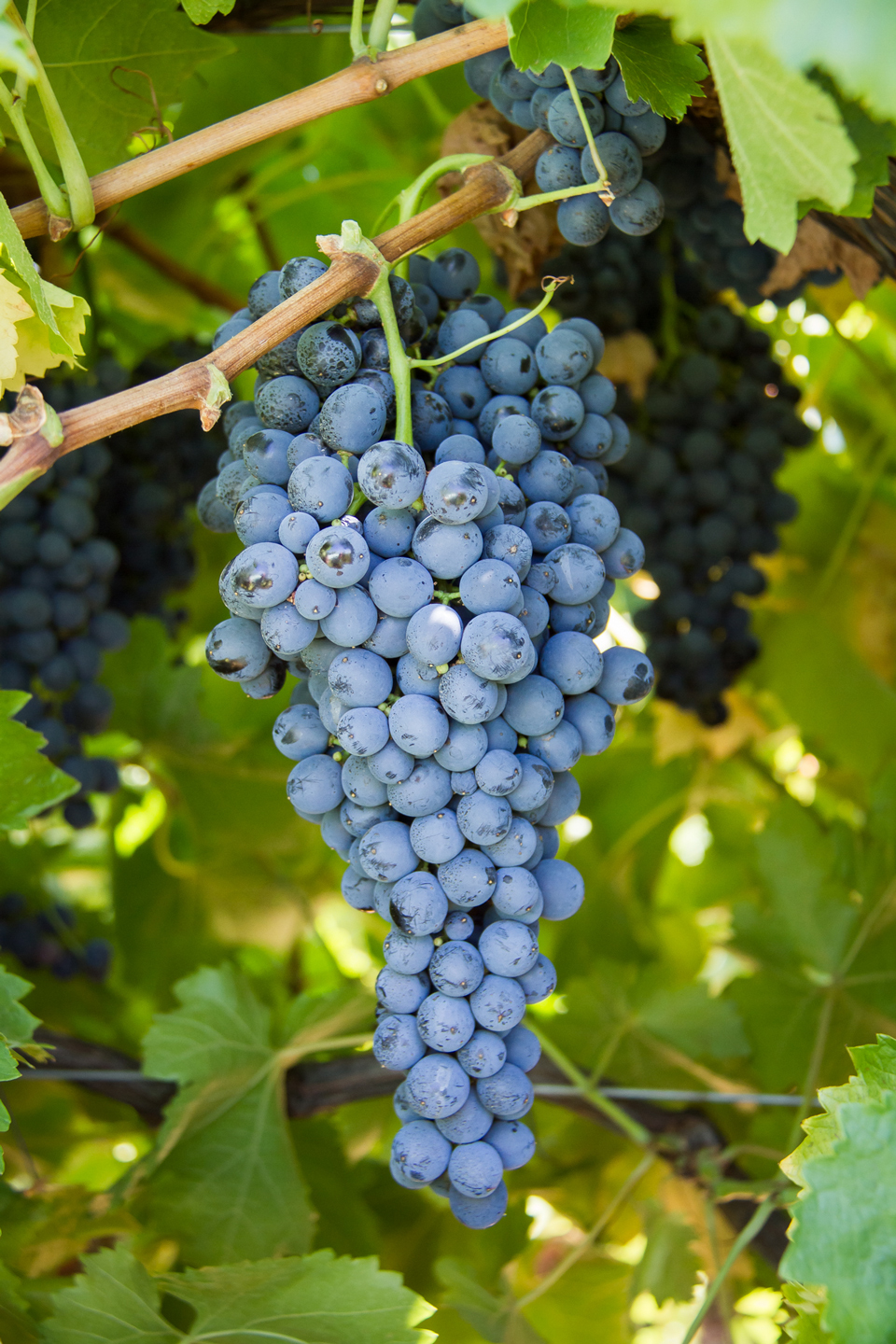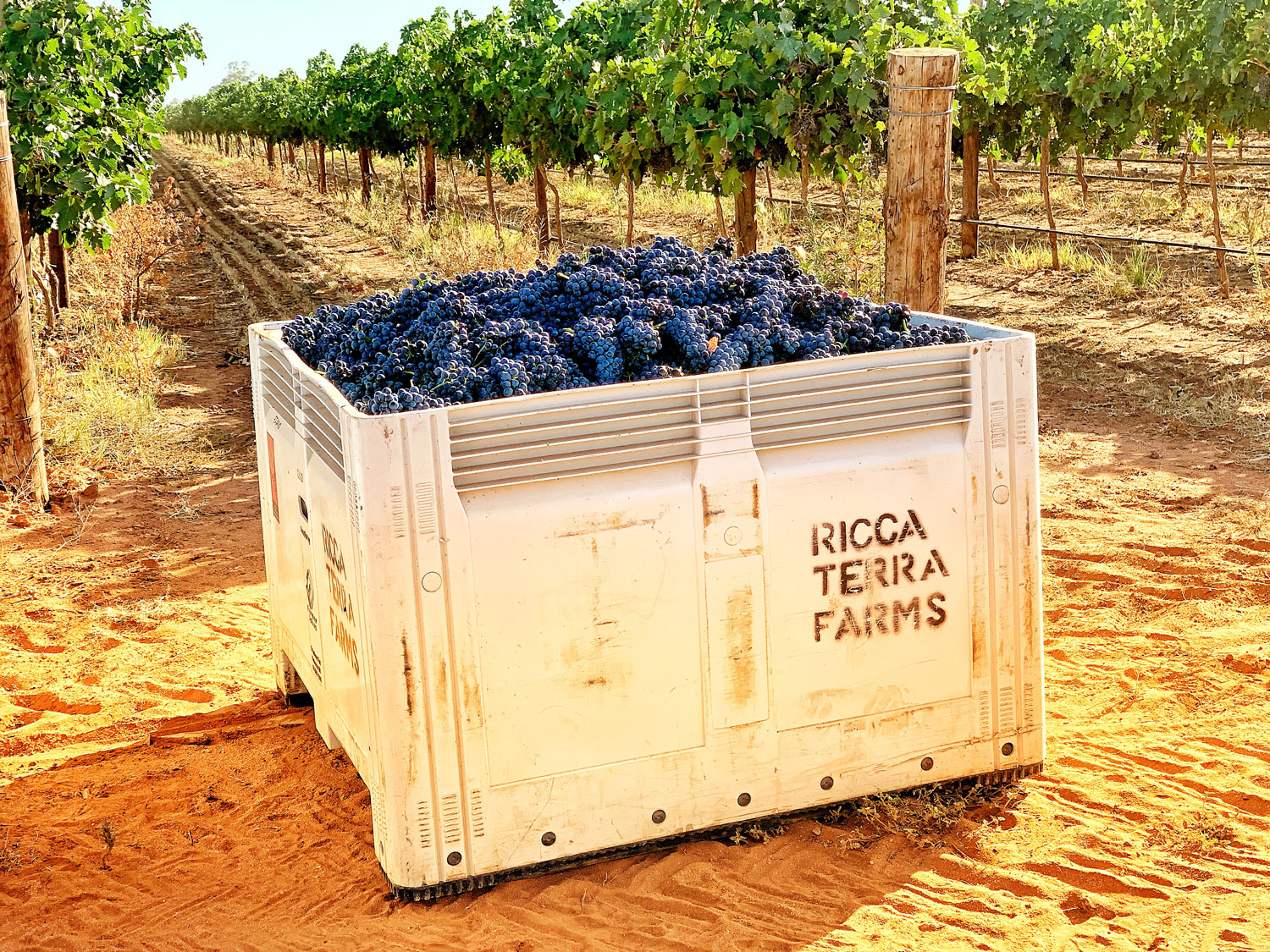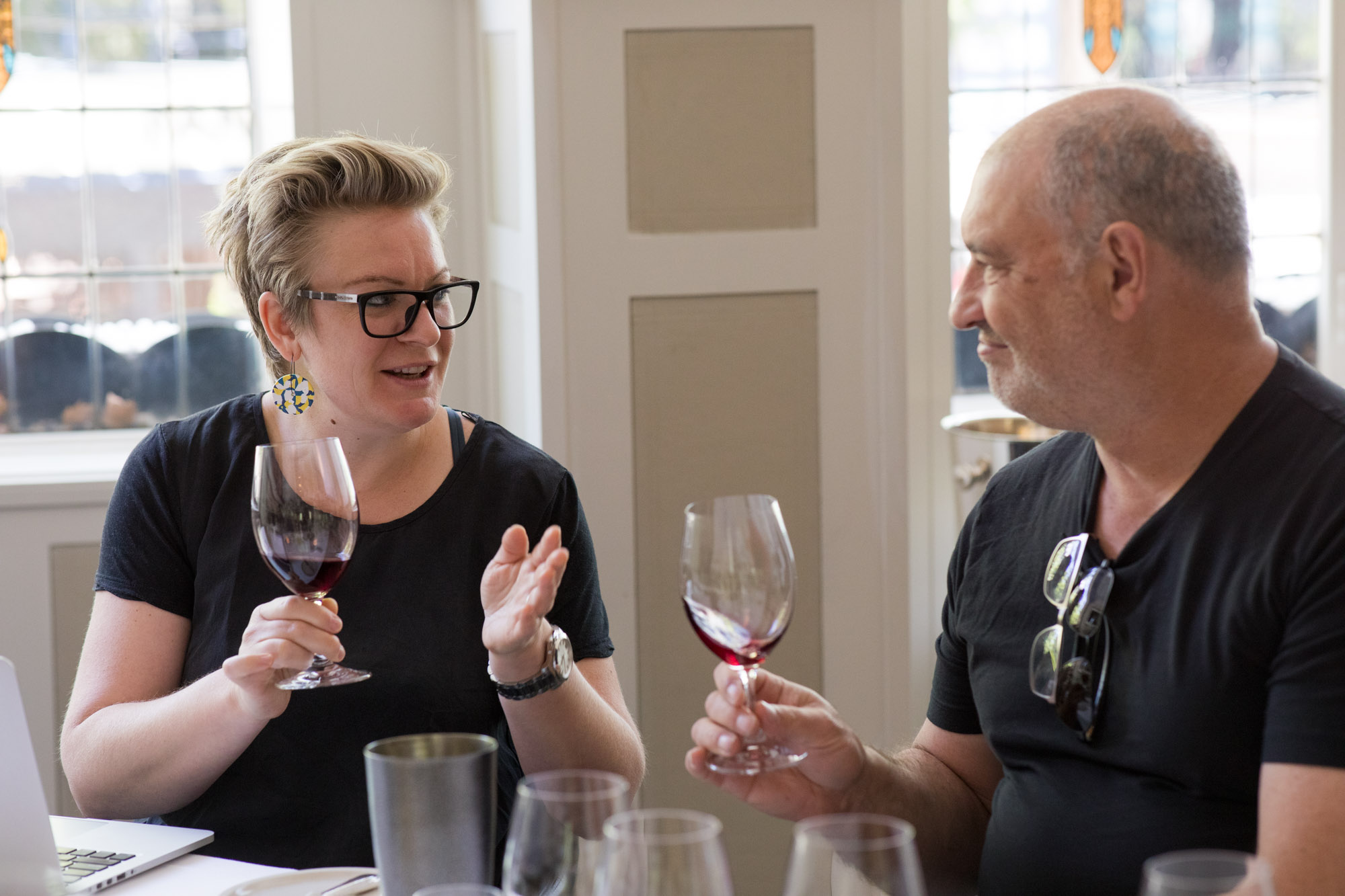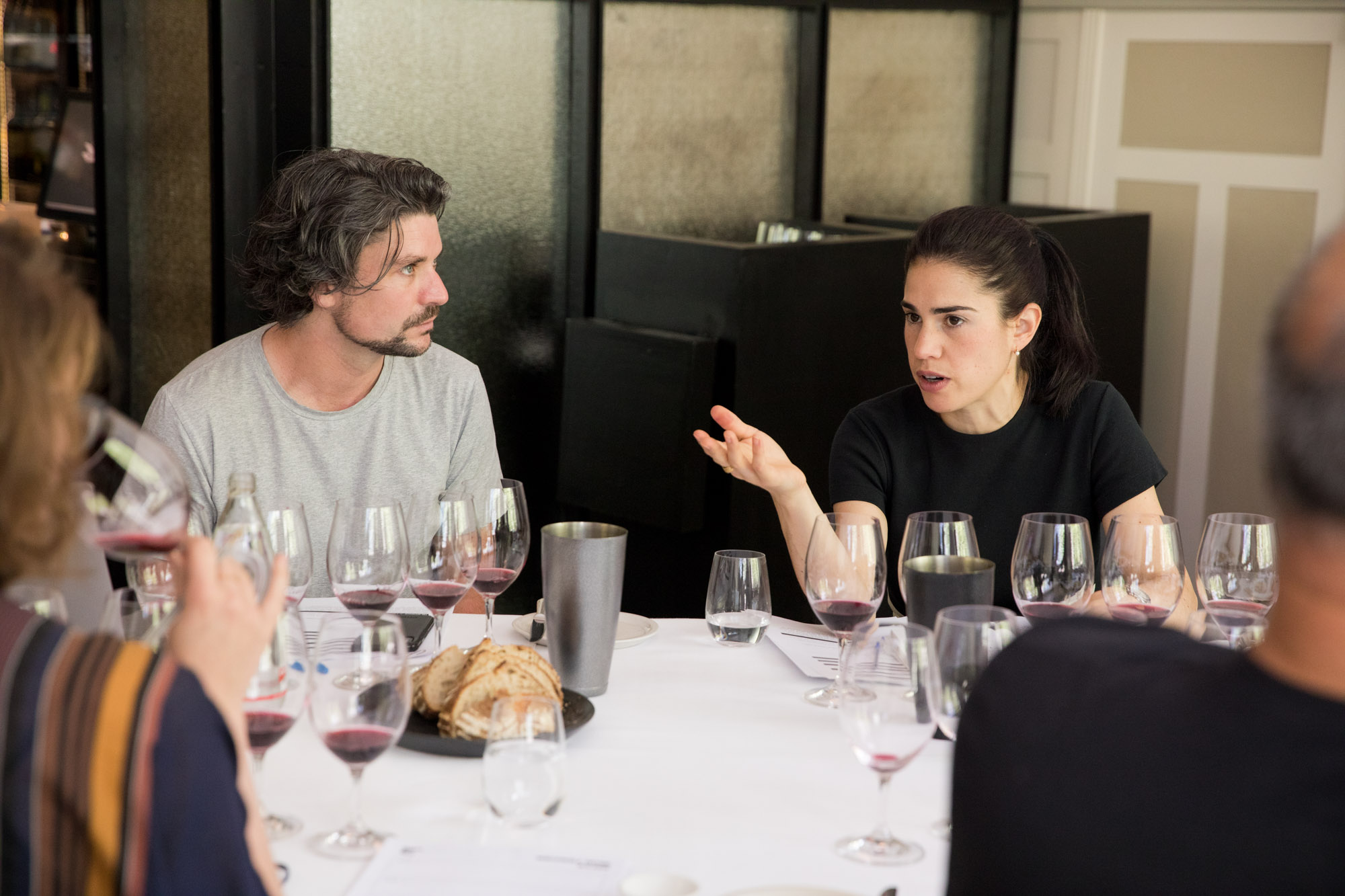Australia’s Best Nebbiolo
With both maturing vines and a depth of winemaking knowledge on how to handle the fruit, we thought it timely to line up as many currently available Australian bottlings of nebbiolo to see how it’s faring across the land.
Australia is vast, with our climate richly diverse. And our wine regions are just as varied, with grapes grown in some cool and lofty places, as well as those low-lying and relentlessly hot. And with those hot places not looking like cooling down anytime soon, growers around the country are turning to varieties that don’t just tolerate the heat, but genuinely relish it. Sicily’s nero d’avola has been leading the pack for sun-loving varieties, rapidly inserting itself into the thinking of growers, winemakers and drinkers alike, with the number of plantings and bottled expressions expanding exponentially. When you think that the first Australian example was only made a little over a decade ago, it’s an extraordinary rise. And, well, that means a Deep Dive is in order. We gathered a group of Australia’s finest palates to taste as many local neros as we could to see what makes it tick.
Our panel: Kim Chalmers, Operations Manager Chalmers Wines; Kara Maisano DipWSET, Wine Director Masani; Isabelle Szyman, Sommelier; Alex Hudak, Pure Wine Co.; Will Dyer, Owner and Director La Carta; Lisa Cardelli DipWSET; Mario Marson, Winemaker and Owner Vinea Marson; and Sandro Mosele, Winemaker. All wines were tasted blind.
With eight of the finest palates in attendance, we gathered every example we could find in Australia and set our expert panel the tasks of finding the wines that compelled the most. All wines were tasted blind, and each panellist named their top six wines. Below are the top wines from the tasting.
This was rated highly by five tasters, with it just missing out on top spot from three panellists, while Dyer declared it his wine of the day. “Another very vibrant style is unleashed here,” he wrote. “Squeaky cherry fruits dominate… After a minute the nose starts to open up, yielding some choc and cola interest. Its exotic perfume really goes to your head. A herbal, pure style that has lots of zip and cut on the palate.” “Savoury nose, slight salty note, cherry and earthy aromas too,” noted Chalmers. “Bright palate backing up the same notes… powdery mouth-watering fine tannin, almost chalky. Very front palate focused, mid-weight but good density… in balance with high acidity.” Mosele called it, “Vibrant, clean and expressive, with lovely savoury and saline characters – a very interesting drink.” Cardelli also had it towards the top of her list. “A concentrated example of red cherries and strawberries… rose petals, touch of minerality, some exotic spices,” she wrote. “The palate also is a powerhouse of red fruits and flowers, complemented by refreshing acidity balanced with alcohol and dusty tannic structure. There is a bright, juicy and fruity/spicy feeling here.” “The fruit throughout this wine is vibrantly purple, almost neon in character,” noted Szyman, “think cherries, blackberries and mulberries about to burst with juice. The tannins were lovely and powdery, with some bracing acidity and a nice ripeness to the fruit on the palate. A really drinkable style, could possibly be served a little chilled on those hotter days.”
This featured in four of the panellists’ top-six lists, with Hudak rating it as his wine of the day. “The wine shows aromas of cherries, raspberry jubes, intense floral aromatics with underlying tobacco leaf,” he wrote. “The palate is dense, replicating the fruit aromatics with cherry and raspberry fruits, textural chalky tannins support the fruit, with the acidity creating a core of freshness, and the alcohol is balanced.” Maisano also rated this highly. “A cornucopia of red fruits, pomegranate, hibiscus, cranberry and maraschino cherry. A firm body with chalky tannins and a dry savoury finish to the red fruits. An elegant and tightly structured rendition of nero d’avola.” Mosele saw it as, “Bold and ripe, blood orange again – whole bunch? Good concentration, another interesting drink.” “Dense, dark fruit alongside herbal characters that were very varietal to me,” noted Szyman. “The structure was very Australian, soft ripe tannins, acidity that could’ve been maybe a touch brighter. But what stood out for me was that ripe, dark fruit, paired with a minty herbaceous edge and a touch of sarsaparilla. This one had a definite serious streak that I felt had great potential.”
Both Marson and Szyman rated this as their wine of the tasting. “A more robust style with dark concentrated colour and the most savoury aromas of the day,” wrote Marson, “Tar and dried flowers on the nose are followed by a beautifully fleshy palate with intense cherry and chocolate mouthfeel, accompanied by layers of ripe fruit, good soft tannins, and a hint of amaro bitterness on the finish. I enjoyed the savoury spectrum of this excellent food wine – what I always look for in Italian varieties.” “A wine loaded with versatility and personality,” commented Szyman. “The nose had a lovely levity to it, violet and geranium florals, lush figs, ripe purple fruit paired with more brooding savoury qualities. Cacao, game meats and bitter tea leaves give complexity and depth, while bright acidity cuts through the otherwise deep, dense palate and finishes refreshingly moreish. One foot in Italy, one foot here.”
This was Maisano’s wine of the day, with it just missing out on top spot for Szyman. “Heady aromas of red roses, geraniums, blood plum and baking spices,” wrote Maisano. “Warming body and alcohol are balanced with a crunchy acidity and fine chalky tannins. There is a real savoury finish to the robust core of ripe sweet fruit. A textured and delicious wine to match with the luscious Mediterranean flavours of Sicily.” “Bright red fruit leaps out of the glass,” noted Szyman, “edging into a slightly confected territory without going full Allen’s red frogs. Pink geraniums and red apple skin, with a plummy softness to the palate. A little heat on the back makes me think of some modern styles of new world grenache. Plump and juicy without being overblown, with a crisp, crunch of acidity.”
Maisano and Dyer rated this highly on their top-six lists, just missing top spot for both of them. “High toned, juicy and boiled raspberry frivolity,” wrote Dyer. “I’m enjoying the wines made with freshness in mind, and this has a little more juice and fullness. Some breadth on the palate is good to see followed by a gently acid driven finish. Jumpy red juice lovers will be entirely satisfied.” “Deep and dark aromas of mulberry, red cherry, raspberry and violets,” noted Maisano. “A voluptuous wine with a hint of cocoa and clove. The tannins build slowly, and the finish is supple yet tart. Oozing with fruits of the forest and velvety tannins. A memorable nero d’avola.”
This made both Chalmers and Cardelli’s lists, with the later calling it as her wine of the day. “Crunchy, vibrant, fragrant, well-defined and polished red fruit,” wrote Cradelli, “with cherries, raspberries, pomegranate and some exotic sweet spices. There is also a mineral element of graphite. Seductive on the palate, with juicy acidity that rolls on the tongue. The finish is also engaging, combining a mix of red fruits and minerality. A fruitful, immediate but layered wine, drink now and drink plenty.” “Cherry cola nose,” commented Chalmers. “Red fruit. Fruity palate with high but balanced acid. Vanilla spice and a hint of floral, talcum powder aromas. Not much tannin but mouth coating and persistent. Lighter style but done with finesse, not just all fruit.”
Dyer, Mosele and Hudak all selected this amongst their top six wines. “Fragrant and lifted aromatics, juicy palate, fresh and clean, easy to drink, nice style for early consumption with lovely varietal characters,” commented Mosele. “Savoury ‘medicinal’ notes and iodine join the mash up of cherry/raspberry fruit in a high toned, pure nose that leaps right from the glass,” wrote Dyer. “There is an enjoyable continuation of the wine on the palate. Juicy stylings rule here where tannin is only a small trace that softly adds to the enjoyment.” “Aromas of Asian spices, tobacco leaf, raspberry jubes, cherries and plum fruit notes,” noted Hudak. “There is an element of blood orange that adds some complexity to the wine. The palate offers fleshy fruit intensity with raspberry and cherry fruits; the weight has lovely poise and fruit weight, fine textural tannins with a long fruit derived finish with the acidity keeping the wine fresh.”
This was featured on both Szyman and Marson’s lists. “This wine is one to drink with a few friends over dinner,” commented Szyman. “There’s a lovely sweetness of fruit on the nose, voluptuous purple fruit with a hint of sweet spice and matchstick smoke. The tannins are sappy and stemmy, and the acid mouth-watering. It is crying out to be drunk at a table with a few friends and a very good pizza.” “A good example of a more integrated use of whole bunch,” noted Marson, “resulting in a rich and concentrated core of dark cherry fruit. I was struck by the varied success of whole bunch in the wines tasted on the day and found this example to be one of the most balanced. Brooding dark and brambly fruit, with firm tannins and good length. A balanced wine. On reflection, I could have included it in my top two.”
Marson, Mosele and Hudak all rated this amongst their top picks. “Dark colour, with lifted dark cherry and sweet red fruit on the nose,” wrote Marson. “New oak and a smoky but not unpleasant full palate, with good acid and length followed by subtle dry tannins.” Mosele found it, “A left-of-centre style, but energetic and vibrant. Some sarsaparilla, blood orange (whole bunch?).” “The wine shows a savoury element,” wrote Hudak, “tobacco leaf with some stony minerality, cranberries, brambly redcurrant, cherry notes and some subtle smoky oak. The palate offers sweet cherry fruit with blood orange and Campari notes. The wine has length, fruit intensity and the tannins are textural and integrated, with a fine core of acidity and the oak coming through on the finish, but this will dissipate with time.”
Dyer and Chalmers both rated this amongst their top-six wines. “Wonderfully aromatic,” wrote Dyer. “Full of bright-coloured lolly drops and a sappy herbal side that pushes some savoury edging into the mix. Light in body, it skips along with prickly acidity leaving the palate quite refreshed …it’s a joyful, joven-style wine.” “Nice nose, bright cherry, some nice herbal and tar notes, a little charry, too,” commented Chalmers. “Pretty… Lovely fine and bright palate. Great acid. A fresh joyful and simpler style and a downright delicious drink. Showing a kind of fruit purity that says to me maybe it’s grown on sandy soil. Or maybe not. Who knows!”
This was Mosele’s top selection from the tasting. “Good energy and an appealing nose, with bright fruits,” he wrote. “It is softer and more approachable on the palate, making it a wine to drink earlier, but it’s very attractive.”
“Cherry aroma jumping from the glass, nice fruit density on the nose, bright and a little dusty, Beautiful!” wrote Chalmers in naming this as her top wine of the tasting. “Nice acid, good length. Nice savoury herb notes. Ripeness is bang on. Lean but not green and pleasantly mouth-watering (pass the salumi!). Nice tannin, good back palate. Food wine.”
Marson rated this towards the top of his top-six list. “Dark colour with briary fruit, dark cherry notes as well as lifted florals on the nose,” he wrote. “Another excellent example of whole bunch in its rightful place. This wine had particularly high acid with nice tannins, with pleasantly sweet cherry characters and good length on the palate. Slightly green tannins followed – the bitterness adds interesting complexity to the wine.”
While missing out on top spot, Hudak gave this near top billing. “The wine shows floral rose petal aromas with raspberry jelly, red cherries, brambly redcurrant notes and subtle, well-handled oak nuances. The palate offers fleshy fruit, fine textural tannins that meld into the overall feel of the wine, the mouthfeel is generous and is more about profiling the fruit than the winemaker’s hand. Length of flavour and fruit intensity with the acidity following through to the finish.”
“A balanced style, with dark colour and cherries dominating on the nose as well as some pretty floral character, predominantly lavender,” wrote Marson. “Good length and a nice balance of acid and tannin.” “Great nose,” commented Chalmers, “bright dark cherry, good tannin (without oak? Or very sensitive oak use). Savoury, mid-weight, good density, nice herbal note, but definitely ripe. Good persistence. Sweeter fruited and a bit more of that rounded mid-palate warmth …a good example of a darker more savoury wine.”
Cardelli: “Notes of dried tomato, rhubarb, cherries, dried herbs and graphite mineral note. Nice tannin presence on the palate, without being too aggressive nor assertive. Well-defined and polished fruit, elegant in some senses, but more in its silkiness. An interesting drop with an interesting appealing finish.”
Hudak: “A youthful, dense wine with purple hues. A floral perfumed aroma with Asian spices, red cherries, wild brambly redcurrants and red liquorice notes. The palate has a savoury edge to it and shows maturity to the previous wines, there are notes of cranberries, pomegranate and bitter red cherries. A fine tannin structure that offers texture and length on the palate, which is supported by the acidity.”
“Floral candied fruit aromas, with plum, raspberry, redcurrants and cherry fruit notes,” wrote Hudak. “There are spice aromas, tobacco leaf and a light dusting of oak. The palate offers fruit generosity with plums, cherries and raspberry intensity; the tannins offer a fine structure and there is a softer acid profile than previous wines.” “Concentrated red cherry, raspberries, red plums and redcurrant,” noted Cardelli. “Fruit forward on the palate as well, with some juiciness and crunchiness. Strawberries and cream, all in check and well balanced. A lovely bright example with interesting finish, very drinkable right now.”
Dyer: “This goes next level with dizzy perfume – feeling and looking a little like sticky, bunchy shiraz. Exuberant cherries, from dark to bright red, gush with a tiny frame of tannin to underscore it. There is an even balance of similarity from nose through the palate that I feel the best wines have had today.”
“Dark colour, more concentrated fruit-driven style with predominantly cherry aromas, oak sitting pleasantly in the background,” wrote Marson. “The sour cherry palate is rich, with a slight oak sweetness and a clean finish. An enticing style, with oak a touch dominating an otherwise delightful red fruit profile. The only negative, in a fantastic wine.” “A brooding combination of red and black fruits,” commented Maisano, “black cherry, pomegranate, rosehip, cedar and allspice. A hint of charcuterie on the palate, layered with intense black cherry flavours. The dusty tannins build and finish with oak spices. The interplay of tannins and meatiness make for a seductive wine.”
Maisano: “Opulent bouquet of blood plum, red cherry, geraniums and tobacco leaves. A juicy core with a concentration of red fruits and exotic spice. The dusty tannins are elevated by a full yet light body. Length and finesse give a seamless finish.”
Cardelli: “Aromas of dried herbs, rosemary, a balsamic feeling, exotic sweet spices and vanillin from the oak. It has a certain jubieness, dried rose petals, rhubarb. On the palate is balanced, some juiciness and well-defined red fruit.”
Cardelli: “Deep colour, very floral at first, freshly crushed roses, red plums, black cherries, Indian spices, and an anchovy element. Soft on the palate but some tannin structure there, good acidity and well-balanced alcohol.”
“Iris, geraniums, cinnamon quill, nutmeg, black cherry and fennel,” wrote Maisano. “Warming and plush on the palate with fine-grained tannins. A rounded body with a hint of herbs to finish. A supple expression to savour with ease.” “Slightly muted but quite varietal nose balancing fruit/tar/herbs,” commented Chalmers. “Darker fruit spectrum – black berry – but wild forest style with brambly notes. Nice tar notes, fruit in balance with savoury elements, palate weight matching the nose and finish. Good acidity and some tannin structure. Really pleasant drink, showing a bit more complexity while still remaining in that high-approachability camp.”
Szyman: “Another wine that landed in what I would call ‘nero nouveau’ category. Packed full of black cherries and blackberries, the florals are exuberant and leap out of the glass. Lying just underneath is a soft herbal note, like crushed sage leaves and thyme. However, unlike some that went for this kind of style, this wine had a bit of meat on its bones. The mid-palate is nicely fleshed out, with plump tannins and acidity that would draw me in for a second glass.”
Mosele: “Easy drinking, very soft, with tannins very round. This is a wine to drink now, but with enough acidity to carry the wine through.”
Dyer: “Whispers of Amaro (dried herbs and gentian) kick the wine off with dark cherry fruit compote bouncing from the glass. The savoury aspects happily follow through the palate. In the mouth the soaked cherry fruit is gentle and carries to a decent length. Drying tannin sticks and perhaps holds the wine back from a full finish.”
Many of Italy’s native grapes are thought to have passed through the south, having filtered across from Greece, finding their best territory over time, adapting and mutating along the way. Some proliferated in the sunny south, others found refuge in the mountains and further north, while many remain scattered throughout.
Interestingly, while defined Italian borders are a relatively modern thing, the leading southern red varieties are almost exclusively grown in their own regions, barely – if at all – migrating to their close neighbours: gaglioppo in Calabria, negroamaro and primitivo in Puglia, and nero d’avola in Sicily – while aglianico straddles both Campania and Basilicata.

Sicily’s leading red variety is overwhelmingly nero d’avola. Literally translated, the grape’s name means “black from Avola”, a town in the south-east in the province of Syracuse. So, a black grape from a town about as far from the rest of Italy as possible, but oddly the grape is officially known by the name calabrese, pinning it to Calabria – the toe of the Italian boot – where it is barely present, with Sicily accounting for 98 per cent of Italy’s plantings.
Nero d’avola has been the historical workhorse red grape of the island, being a reliable producer of reasonably large volumes of agreeable red. Unlike primitivo and negroamaro, which can yield intensely powerful wines, nero d’avola typically turns out mid-weight ones, and even much lighter examples due to the Sicilian propensity to return large crops. In truth, this was very much a pan-Italian approach, with lighter wines historically favoured over richer ones, prior to a 20th century wine revolution that prioritised concentration over quaffability.
In Sicily today, light and mid-weight neros rub shoulders with examples that are pushed to full concentration and ripeness – if not as buxom as those of negroamaro and primitivo from Puglia. And while the south-east is the spiritual home of the grape, it is grown widely across the island, and bottled both solo and in blends, with modern interpretations pairing it with varieties like cabernet sauvignon and syrah. The classic match, though, is with another local grape, the pretty, berry-scented frappato. A blend that can be an even split of the two grapes – though more typically leans to more nero – is responsible for the island’s only DOCG: Cerasuolo di Vittoria.
No doubt adapting over time, nero d’avola has become perfectly suited to local conditions, with it tolerating heat stress like few – if any – other varieties. Its vulnerability, perhaps, is that it has relatively thin skins, making it more susceptible to disease pressure during the growing season. But again, this is also suited to its prime territory, where abundant sunshine, generally drying conditions and maritime breezes often negate that pressure. Those thinner skins also avoid a gruffness of tannins, which the hot southern sun would only enhance.
Nero d’avola grape bunch on vines. Photo courtesy of Chalmers Wines.
Over its 200-odd year history, Australia has primarily relied on classic noble grape varieties to drive the industry, most of them French. Shiraz, cabernet, semillon, chardonnay, grenache and riesling have been the mainstays, with Italian grapes not really featuring until the end of the 20th century, which is perhaps surprising given the level of post-war immigration from Italy.
Typically, those new arrivals responded to what was around them, with farmers growing what was successful, whether it be vegetables, tobacco or the available grapes, for wine or the table. They adapted. It wasn’t generally until a little later that some of those home-country traditions were recreated more fully, with areas like the King Valley pivoting from tobacco farming to becoming grape-growing centres.
And although some of the more familiar Italian names – like nebbiolo, sangiovese and barbera – got an earlier start, it wasn’t until an ambitious project by the Chalmers family to import a raft of vines that a serious exploration of native Italian varieties began in earnest.
In 1999, in partnership with Italian nursery Vivai Cooperativi Rauscedo and with the assistance of renowned consultant Dr Alberto Antonini, the first vines landed, with many planted in the Chalmers’ family vineyard in the early 2000s, once out of quarantine. Much of Bruce Chalmers’ motivation was to find both varieties and clones that would perform in Australia’s wildly diverse regions, perhaps eclipsing the incumbent – and rather narrow – selection of varieties over time.
The Chalmers family are responsible for importing and supplying all the nero d’avola vines in Australia.
Nero d’avola was imported in that first batch of vines, along with other key varieties landing for the first time, such as aglianico and sagrantino. Chalmers first planted nero in the Murray Darling region at their original nursery in Euston in 2002, and subsequently in their Heathcote vineyard. The first commercial wine was made from fruit from Euston in 2009, with 2011 seeing the first Heathcote release.
While the Chalmers family were pursuing their own investigations into making wine from the grape, they were also selling vines around Australia, with Brown Brothers the first customer (that stock went to one of their Heathcote vineyards) in 2006. By 2008, vines had been planted in the Riverland, Riverina, Barossa Valley, McLaren Vale and Queensland’s Granite Belt, while cuttings were being held in quarantine in Western Australia. Today, there are over 50 vineyards with nero in the ground.
Aside from the possibility of vine material being imported illicitly, all of those vines were propagated from the one clone, which was selected for Chalmers by Dr Antonini from a vineyard in Vittoria, Ragusa. And while Kim Chalmers – Bruce’s daughter and the Wine Operations Manager – admits mono-clonality is not ideal (new vine material is currently in quarantine), she believes that even without that diversity of material, nero has established its identity rapidly and decisively.
“I feel like it’s off to a better start than nebbiolo or sangiovese,” Chalmers says, “because the early nero wines are making more sense straight up. We are smarter in our approach now – not just trying to make everything like shiraz, actually letting the grape speak, which nero is doing well across the board.”
“Nero is certainly a late ripener,” laughs Coppard. “You’re able to let it hang on the vine to get the acid to drop a bit, but the flavour and sugar won’t move much. Unlike shiraz, which quickly gets baked and jammy and then you need to add acid back. You don’t need to add anything to nero. It’s lazy winemaking at its best.”
Ashley Ratcliff of Ricca Terra Farms in South Australia’s Riverland was an early adopter of nero, planting it originally with the sole motivation of coping with the long-running drought in the first decade of this century. What was originally almost an act of desperation returned surprising results, with the quality and character of the fruit beyond his expectations, plus reducing the water used in irrigation was not just possible, but best practice.
“We now use about half the water of more traditional varieties,” says Ratcliff. “When I first started growing nero, we used to use classic methods to increase quality by reducing yields through shoot thinning and bunch thinning… but stressing the vines by reducing irrigation prior to flowering ‘shatters’ the bunches, with flowers dropping off, meaning you get less berries per bunch with clusters more open for airflow, and your yields are lower.”
Ratcliff says this kind of “shatter” is something that viticulturists would normally despair at, but it’s an adaptive response to a variety with tightly packed bunches, which means that any rot issues close to harvest due to rain events are avoided, plus the crop load is balanced for production of quality wine. So, in many senses, nero is a variety that is well suited to low-rainfall, irrigation-dependent regions, such as those that hug the Murray River.
Ratcliff stresses that the warmer climate also helps nero fruit to develop properly on the vine. “It’s a variety that needs the heat, not necessarily as hot as the Riverland, it could be the Barossa or McLaren Vale, but I think it needs that heat to properly ripen the tannins.”
Nero d’avola grapes harvested at Ricca Terra vineyard in the Riverland.
Andy Coppard of McLaren Vale’s Lino Ramble sees a near-perfect suitability to his region with resultant wines that are also very of place. “To talk about terroir, when you look at McLaren Vale compared to the southern coast of Sicily,” he says, “we’ve got almost identical conditions for climate and rainfall, but our geology is completely different. Sicily’s volcanic soils are some of the most fertile you’ll ever see. Here, we have some of the most ancient, depleted soils where we need to build up organic matter, so while grapes like nero and grillo are perfectly suited, our flavour profiles are so different.”
Ansell Ashby of Gatch Wine, who makes wine both from fruit from his Adelaide Hills base, as well as from the Riverland, believes that nero is not just adapted to the heat, but genuinely relishes it.
“It’s counter-intuitive, but you’re actually able to pick later, but with less alcohol and higher acidity than somewhere cooler… and it develops some quite surprising characters from a place as warm as the Riverland, in that you can still retain this really lovely bright, fresh fruit. And when you have a really hot year, it can survive it better. It can take those eight-day-long 40-degree heatwaves, and the variety is actually tolerant of that.”
“Nero is certainly a late ripener,” laughs Coppard. “You’re able to let it hang on the vine to get the acid to drop a bit, but the flavour and sugar won’t move much. Unlike shiraz, which quickly gets baked and jammy and then you need to add acid back. You don’t need to add anything to nero. It’s lazy winemaking at its best.”
That suitability is seeing nero d’avola develop a following that is far more interested in its quality in the glass than its capacity as a survivor in harsh conditions. Nero has cemented its place as a variety that we will be seeing a lot more of in this country, with characterful and distinctive expressions abounding. It is also a variety that is producing wines of abundant flavour, but ones that are well suited to the tastes of a drinking public that are increasingly interested in elegantly weighted wines.
“It makes sense viticulturally in a lot of the drier warmer areas, using about half the water of other varieties,” says Chalmers. “It responds to the different soil types clearly in the wine. It is generally moderate in alcohol, without adding water, bleeding off juice etc… To me, it makes way more sense to grow the grape that does what we are trying to do than to manipulate the winemaking to get a result with a grape that is clearly not as happy in its environment.”
Nero d’avola is highly responsive to location, with the fruit flavours markedly affected by the soil and growing conditions, and it’s very capable of expressing the mineral characters of site. Notes of wild raspberry and cherries are quite common, often with earthy, tarry accents and scents of wild herbs. As it gets riper, those darker, tarry notes become more prominent, while the prettier red fruits recede, with dark plum and black cherry emerging. When grown on lighter, sandier soils, nero can be very aromatic and quite pretty, while winemaking methods can also help to accent lifted floral notes and fine red fruits, like pomegranate. In terms of weight, nero rarely makes big wines, with even the plusher examples never having the weight of a full-throttle shiraz, for example. Nero’s thin skins generally mean that tannic grip is on the lighter side, with characteristic acidity providing driving freshness.
Our nero d’avola tasting at Grossi Florentino in Melbourne. Photo by James Morgan.
We gathered a group of Australia’s finest palates to taste as many local neros as we could to see what makes it tick. All wines tasted blind.
Our panel: Kim Chalmers, Operations Manager Chalmers Wines; Kara Maisano DipWSET, Wine Director Masani; Isabelle Szyman, Sommelier; Alex Hudak, Pure Wine Co.; Will Dyer, Owner and Director La Carta; Lisa Cardelli DipWSET; Mario Marson, Winemaker and Owner Vinea Marson; and Sandro Mosele, Winemaker. All wines were tasted blind.
Our nero d’avola tasting at Grossi Florentino in Melbourne. Photo by James Morgan.
With nearly 50 examples on the tables, Chalmers was looking at wines that had all come from her family’s original vine sock, imported just over 20 years ago.
“To me, this tasting was a great check-in,” she said. “It’s just a decade since the first wine was made on Aussie soil, and the variety is reaching a critical point of uptake by growers and winemakers, and it has a level of consumer awareness. It said to me that the variety is performing well in different places, and showing its varietal character at the hand of different winemakers. It’s great to see producers being brave in trying to tease out the right kind of wine for their site.”
Kim Chalmers and Sandro Mosele. Photo by James Morgan.
For Maisano, while her experience of Italian examples runs deeper, this was an eye-opening experience. “It’s the first time I’ve really looked at a serious line-up of Australian nero d’avola, and I was impressed! The tannins were not too abrasive on some of them, and so they were very good quaffers, and then sometimes they were really quite serious.”
“There were two distinct styles,” agreed Hudak. “There were those pinot-esque styles with cranberry, pomegranate… and then those verging on shiraz, the bigger styles. But there was also a common thread of flavour and acid through a lot of the wines.”
“The fresher, clean, youthful styles definitely showed the best in the tasting for me,” noted Dyer, “with whole berry and whole bunch fermentation often adding complexity to the wines.”
Will Dyer and Kara Maisano. Photo by James Morgan.
Chalmers found the best wines didn’t tilt too far in either direction. “Some wines were deliberately made in a way that exploited the cherry fruit to the max with whole bunch and very juicy styles… but it’s good to keep it in balance with a bit of a backbone and complementary savoury aspects bubbling underneath to rein that in.”
“The most successful for me were those that exhibited balance of the savoury Italian heritage and the ripeness an Australian climate can produce,” agreed Szyman. “But I didn’t mind some of the ‘bouncy’ ones. I could totally imagine working in a restaurant, and I know who I’m going to sell them to. They’re probably my age. They probably want it to be a little chilled. There’s a versatile application, and it’s a style people want.”
Isabelle Szyman. Photo by James Morgan.
“It was really pleasing to see most wines expressed as happily mid-weight,” added Chalmers, “rather than being unceremoniously squeezed into the big-Aussie-red box, which has been known to happen in the past with varieties that are new to Australia.”
“I loved that many of them had a lot of voluptuous fragrance,” said Maisano, “not just on that bright red and black fruit spectrum, and I got a lot of pomegranate as well, but also geranium, iris, violets… and I think that’s what made some of them so attractive.”
Chalmers noted that tannin ripeness isn’t always an easy proposition with nero. “Getting tannin right in nero is an important thing… I was finding that in those cooler areas the tannins were tending to harshness, because nero does need a warmer site [to ripen tannin], and then oak integration… it’s hard to find a good place for oak in nero. It’s easy to cover the variety with oak.”
“The oak gave the fruit a sweetness that I didn’t like,” agreed Marson, “so it took away from the variety. But the wines that had a bit of tannin and bitterness – I liked those! And they were the wines that as soon as you had food with them, you don’t see the bitterness and they just seamlessly integrated. That’s what’s important, and you see it a lot with Italian varieties. You look at Italians, they’ve got vermouth, and they use bitter herbs… and Campari! Bitterness is saying to you, ‘Right, now we’re ready to eat!’”
Mario Marson. Photo by James Morgan.
“I think when you saw the oak, it was an inappropriate use of oak,” added Mosele. “Excessively-toasty, or coconut… just the wrong type of oak. But there was another group of wines that had a bit of blood orange, had a bit of what I thought were characters derived from whole bunch, which added something interesting.”
“What was really interesting to me was seeing the regionality in the wines,” added Chalmers. “I might be wrong when they’re revealed, but, to me, you could really see the purity and transparency of some of those sandy soil sites compared to the complexity of other soils.”
“I think what sets nero apart for me today,” said Maisano, “is that it has aromatics, good fruit flavours that match up on the palate, and it has this light freshness, which to me is very much Italian red. I think people will really notice those qualities and put in its individual category, aside from shiraz or dry red. I think it does have its own special place.”
Will Dyer and Kara Maisano. Photo by James Morgan.
“What’s also important is that it’s not going to taste like it’s from Sicily. In fact, if you lined up the same collection of Sicilian neros, they’d be equally diverse, with lots of up and down… and lots of shitty ones,” laughed Chalmers.
“I think it suits down to the ground here,” said Dyer. “It’s going to be pretty straightforward for the consumer to get on board. There were lots of fun, energetic wines. I can see who’s going to get them, and I really liked those wines for how fun, vivacious and in your face they were.”
Chalmers agreed, noting that the ball was well and truly rolling. “In terms of reaching the masses, we’re getting requests from large-scale supermarkets via our distributors that they’re wanting to have lines of things like nero d’avola and vermentino. It has filtered down, which is a pretty big step in 10 years. Some varieties don’t even get there in thirty years.”
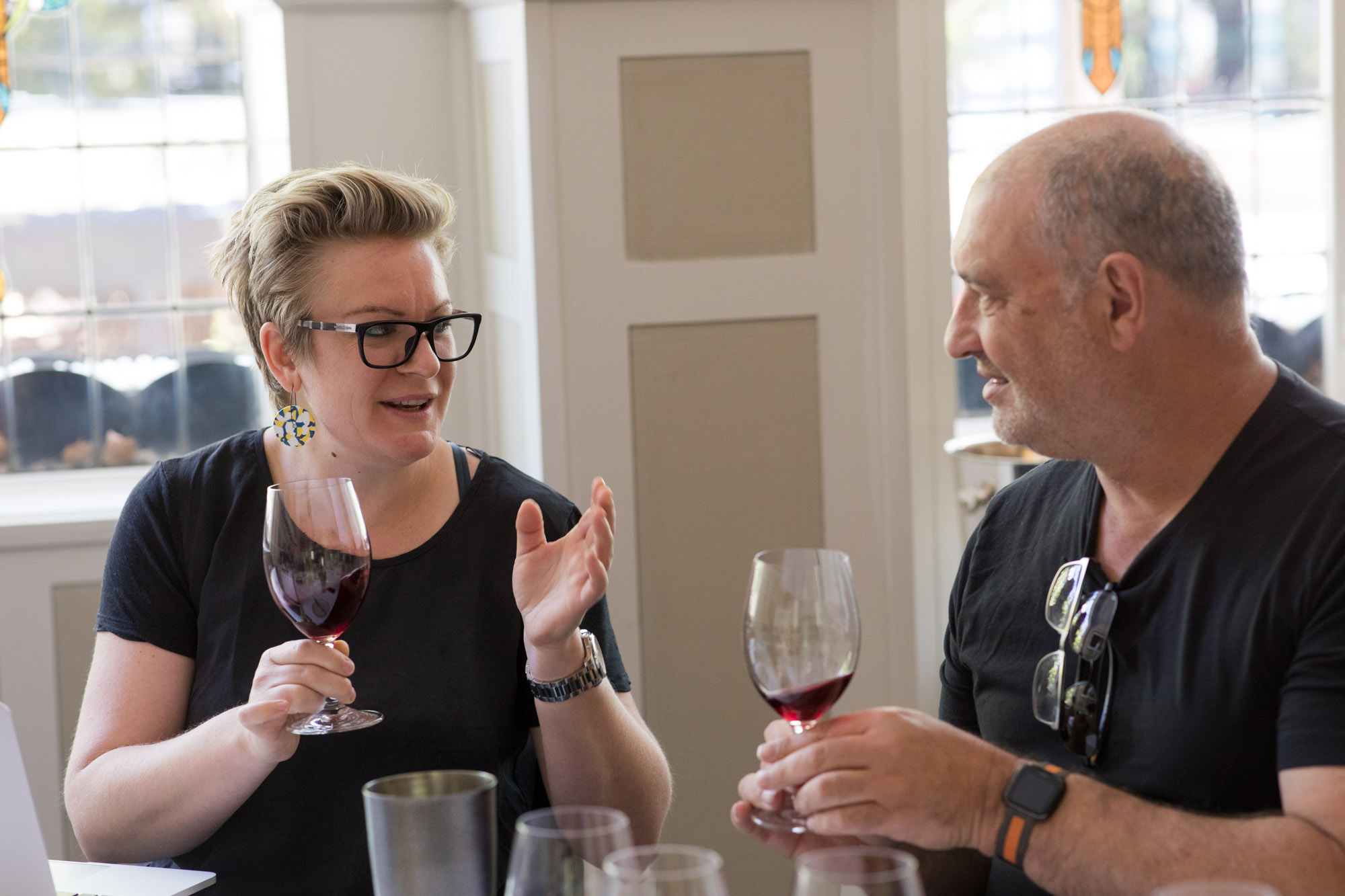 Kim Chalmers manages wine operations at the family estate, Chalmers Wines, working mainly with southern Italian grape varieties. In 2006, Kim trained with Al Gore as a Climate Project presenter and continues to educate Australian winegrowers for climate change through alternative varieties and sustainable practices. In 2012, Kim travelled to Southern Italy on an Agrifood Skills International fellowship researching indigenous grape varieties and viticultural techniques. Kim was Chair of the Victorian Government’s Wine Ministerial Advisory Committee from 2016–2019, is a board member of Wine Victoria, and the Brand and Project Manager of the Australian Alternative Varieties Wine Show.
Kim Chalmers manages wine operations at the family estate, Chalmers Wines, working mainly with southern Italian grape varieties. In 2006, Kim trained with Al Gore as a Climate Project presenter and continues to educate Australian winegrowers for climate change through alternative varieties and sustainable practices. In 2012, Kim travelled to Southern Italy on an Agrifood Skills International fellowship researching indigenous grape varieties and viticultural techniques. Kim was Chair of the Victorian Government’s Wine Ministerial Advisory Committee from 2016–2019, is a board member of Wine Victoria, and the Brand and Project Manager of the Australian Alternative Varieties Wine Show.
 Mario Marson is the owner of Vinea Marson. Before planting vines on his Heathcote property in 2000, Marson was the winemaker for legendary Yarra Valley maker Mount Mary, working for 15 years alongside the equally legendary Dr John Middleton. Marson works with a focus on Italian varieties, both from the home vineyard, as well as sourced from north-east Victoria.
Mario Marson is the owner of Vinea Marson. Before planting vines on his Heathcote property in 2000, Marson was the winemaker for legendary Yarra Valley maker Mount Mary, working for 15 years alongside the equally legendary Dr John Middleton. Marson works with a focus on Italian varieties, both from the home vineyard, as well as sourced from north-east Victoria.
 Kara Maisano is the Sommelier and Wine Director for Masani in Melbourne’s Italian heartland, Carlton. Maisano is a VIA Italian Wine Ambassador, Court of Master Sommeliers Advanced Sommelier, WSET Diploma holder and WSET Certified Educator. She was the Gourmet Traveller Wine Young Sommelier of the Year for 2018.
Kara Maisano is the Sommelier and Wine Director for Masani in Melbourne’s Italian heartland, Carlton. Maisano is a VIA Italian Wine Ambassador, Court of Master Sommeliers Advanced Sommelier, WSET Diploma holder and WSET Certified Educator. She was the Gourmet Traveller Wine Young Sommelier of the Year for 2018.
 Sandro Mosele was the founding winemaker at Mornington Peninsula icon Kooyong, driving it to sustained success over his two decades there. Mosele has been contracted by various other wineries, including for Chalmers Wines, making wines from the Italian varieties at their Heathcote property before production was moved to their new Merbein winery. Mosele is currently involved in an ambitious project planting 10 hectares of high-density pinot noir vines in Merricks.
Sandro Mosele was the founding winemaker at Mornington Peninsula icon Kooyong, driving it to sustained success over his two decades there. Mosele has been contracted by various other wineries, including for Chalmers Wines, making wines from the Italian varieties at their Heathcote property before production was moved to their new Merbein winery. Mosele is currently involved in an ambitious project planting 10 hectares of high-density pinot noir vines in Merricks.
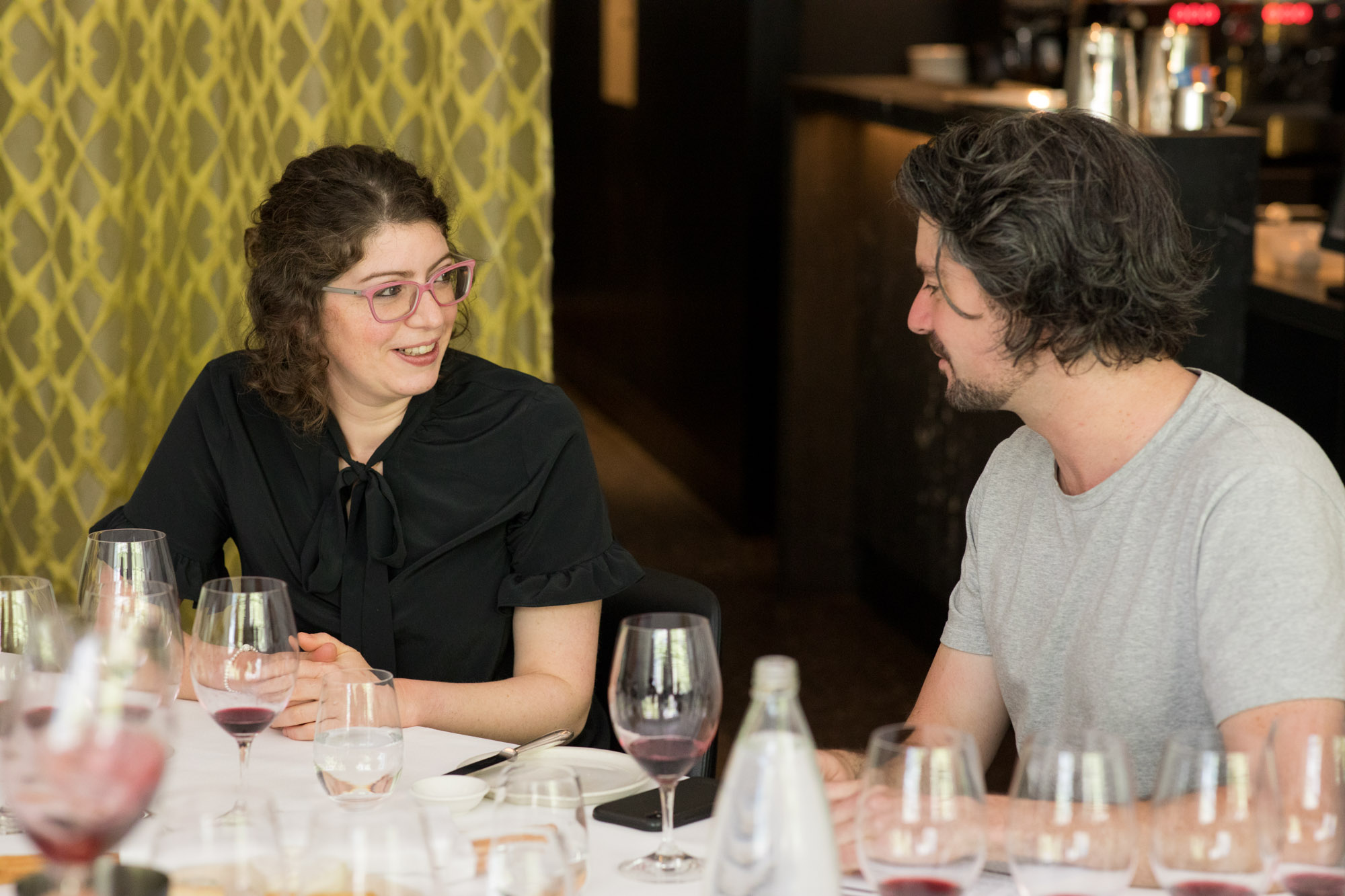 Lisa Cardelli is a WSET Diploma holder who currently works as a wholesale representative for specialist Italian importer Tricolore, as well as at the legendary Prince Wine Store as a WSET Educator. Until August 2019, she was the Head Sommelier and buyer at Rosetta. She is also a wine show judge, most recently at the Royal Melbourne Wine Awards.
Lisa Cardelli is a WSET Diploma holder who currently works as a wholesale representative for specialist Italian importer Tricolore, as well as at the legendary Prince Wine Store as a WSET Educator. Until August 2019, she was the Head Sommelier and buyer at Rosetta. She is also a wine show judge, most recently at the Royal Melbourne Wine Awards.
 Alex Hudak has a background as a fine wine merchant in Perth, but currently works with Pure Wine Co., distributing both local and imported wines. He has judged at numerous capital city and regional wine shows, as well as for shows in Japan and China. He is currently a second stage Master of Wine student.
Alex Hudak has a background as a fine wine merchant in Perth, but currently works with Pure Wine Co., distributing both local and imported wines. He has judged at numerous capital city and regional wine shows, as well as for shows in Japan and China. He is currently a second stage Master of Wine student.
 Isabelle Szyman worked as a sommelier at the City Wine Shop and Carlton Wine Room before taking up a role at Rathdowne Cellars in mid-2020. She has a WSET Level 3 qualification, is a Certified Sommelier with the Court of Master Sommeliers and is currently undertaking the French Wine Scholar program.
Isabelle Szyman worked as a sommelier at the City Wine Shop and Carlton Wine Room before taking up a role at Rathdowne Cellars in mid-2020. She has a WSET Level 3 qualification, is a Certified Sommelier with the Court of Master Sommeliers and is currently undertaking the French Wine Scholar program.
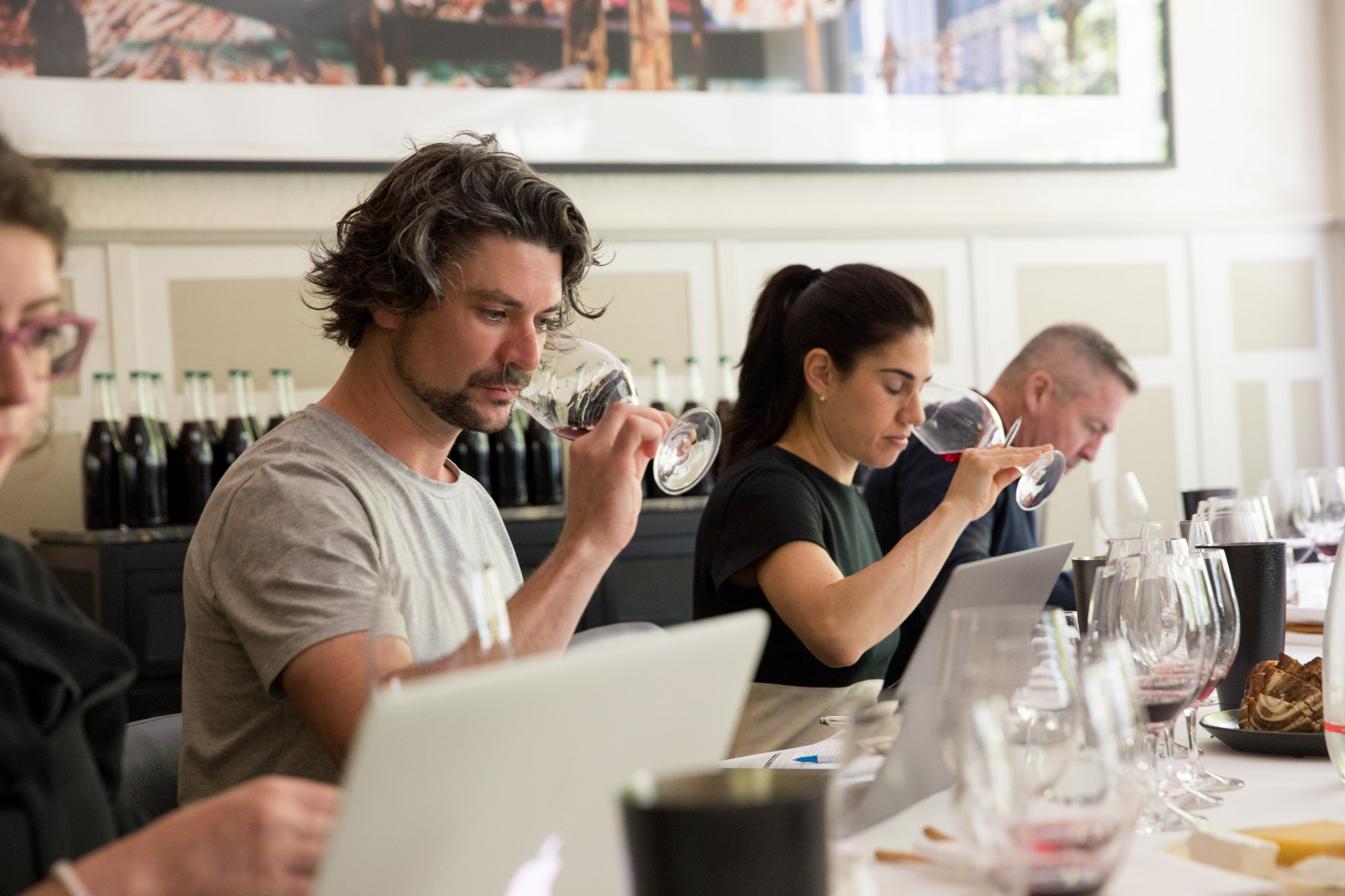 Will Dyer began his career working as a sommelier in restaurants in both Sydney and London. Today, he is the owner and director of La Carta, a specialist importer with a particular focus on producers from the coolest extremities of northern Italy.
Will Dyer began his career working as a sommelier in restaurants in both Sydney and London. Today, he is the owner and director of La Carta, a specialist importer with a particular focus on producers from the coolest extremities of northern Italy.
All wines were decanted into clear wine bottles, so as to not let bottle shape or closure type intrude on the appraisal. The identity of the wines was revealed after the panellists had disclosed their opinions.



Please sign in or create account as candidate to bookmark this job
Please sign in or create account to save this search

Please sign in or create account as candidate to create a resume
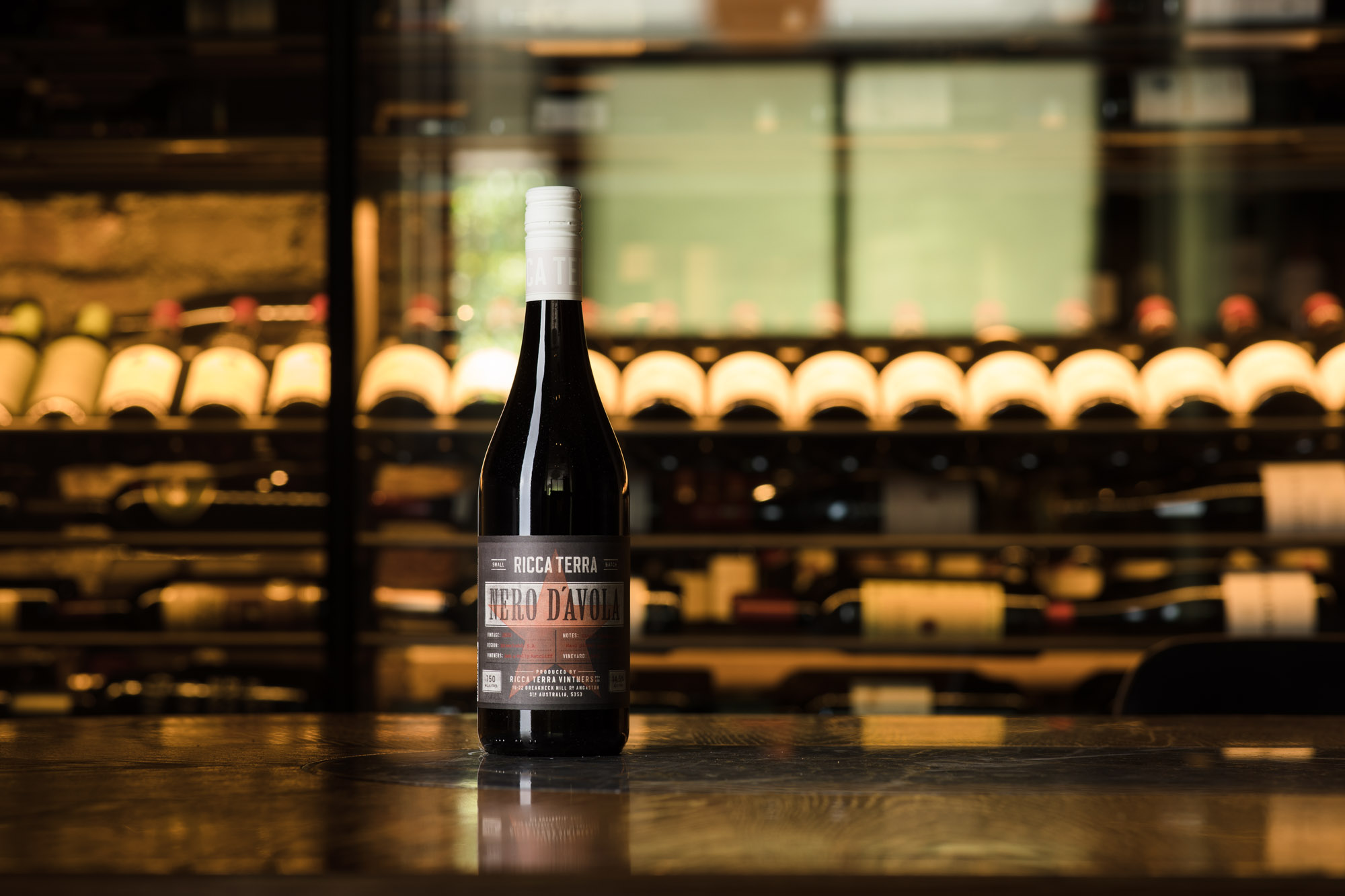 2020 Ricca Terra Nero d’Avola, Riverland $27
2020 Ricca Terra Nero d’Avola, Riverland $27 2018 Bird in Hand Nero d’Avola, Adelaide Hills $46
2018 Bird in Hand Nero d’Avola, Adelaide Hills $46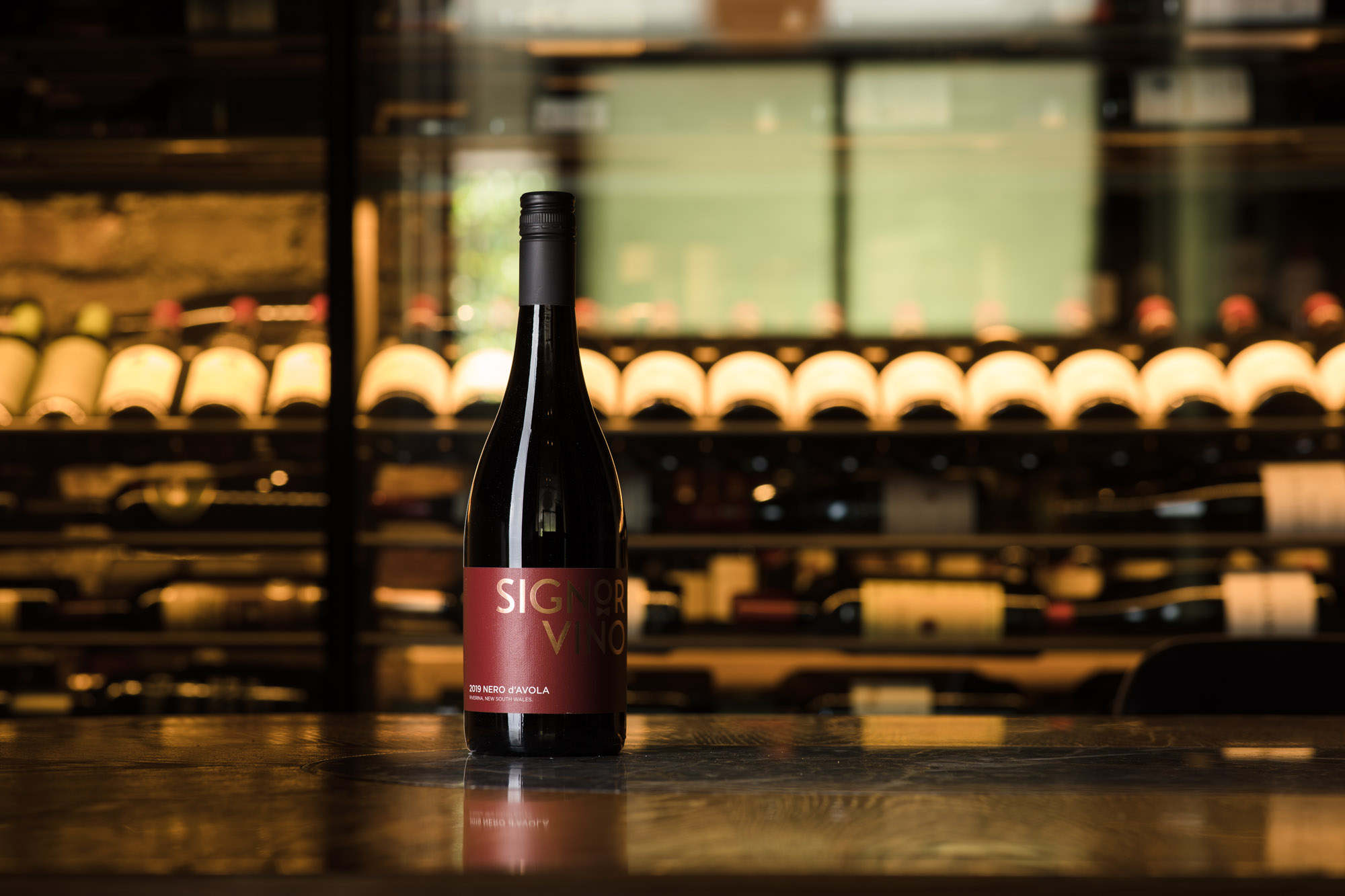 2019 Mino + Co Wines ‘Signor Vino’ Nero d’Avola, Riverina $23
2019 Mino + Co Wines ‘Signor Vino’ Nero d’Avola, Riverina $23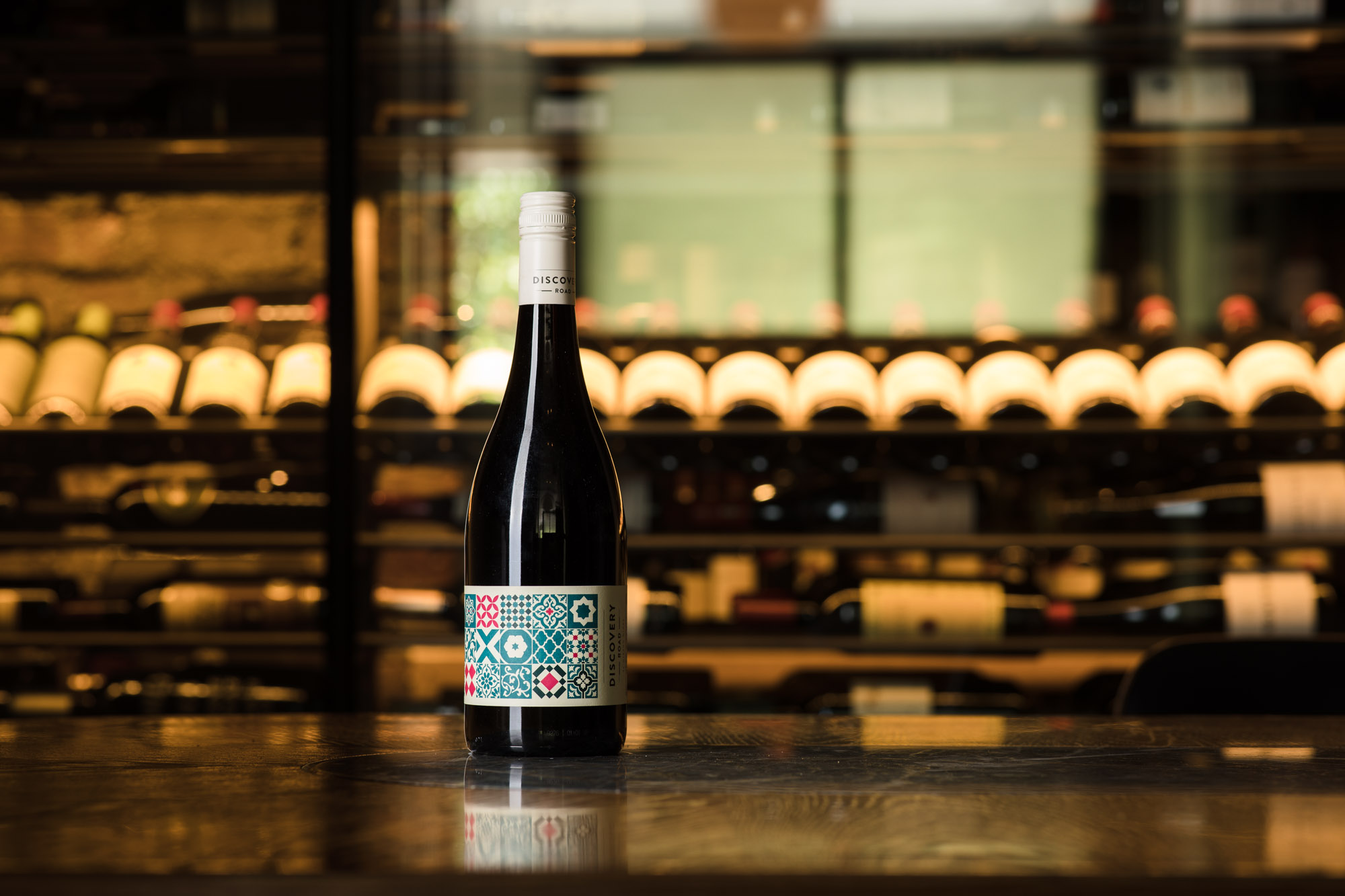 2018 Gibson ‘Discovery Road’ Nero D’Avola, Barossa Valley $25
2018 Gibson ‘Discovery Road’ Nero D’Avola, Barossa Valley $25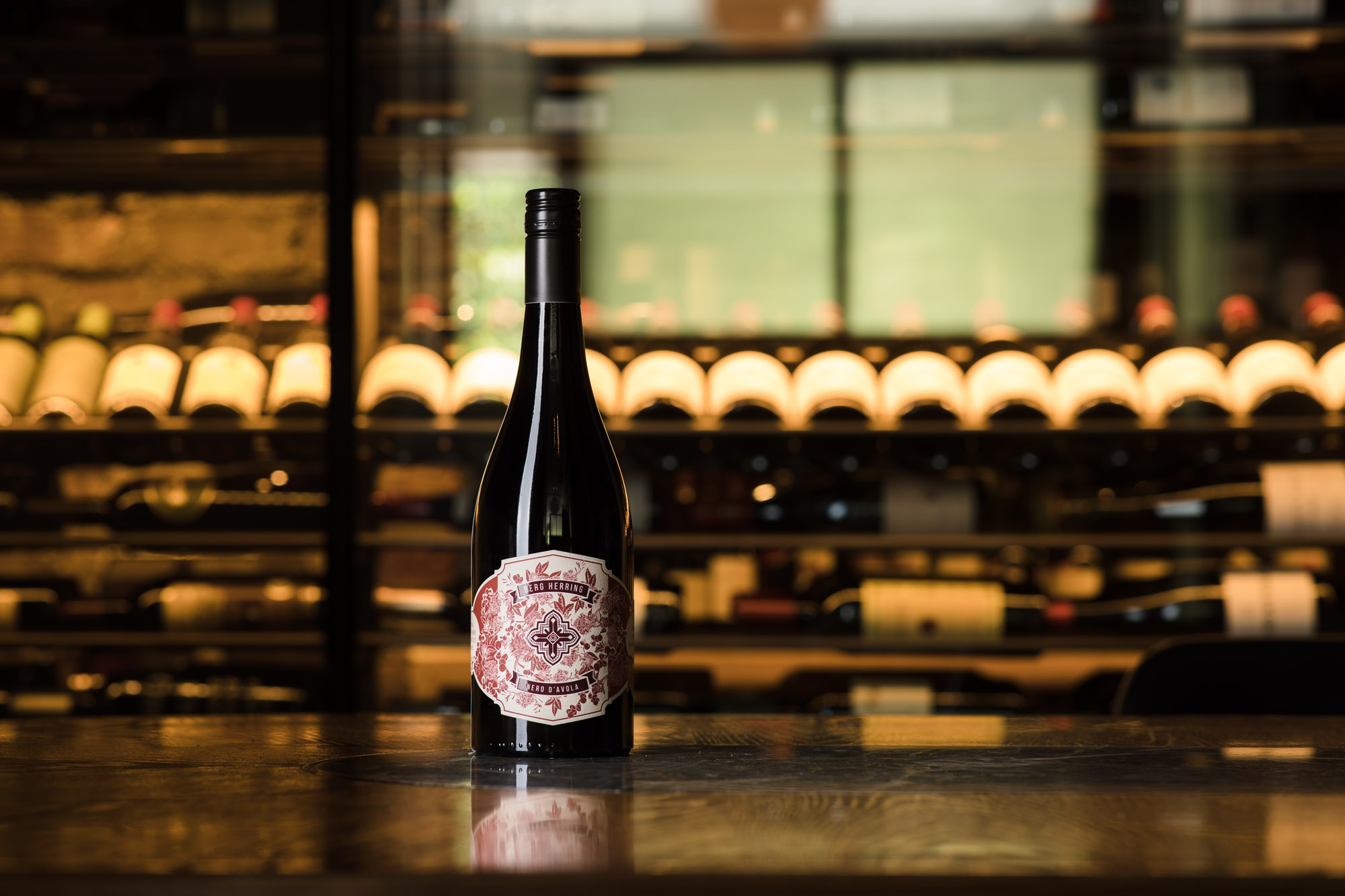 2020 Berg Herring Nero D’Avola, McLaren Vale $28
2020 Berg Herring Nero D’Avola, McLaren Vale $28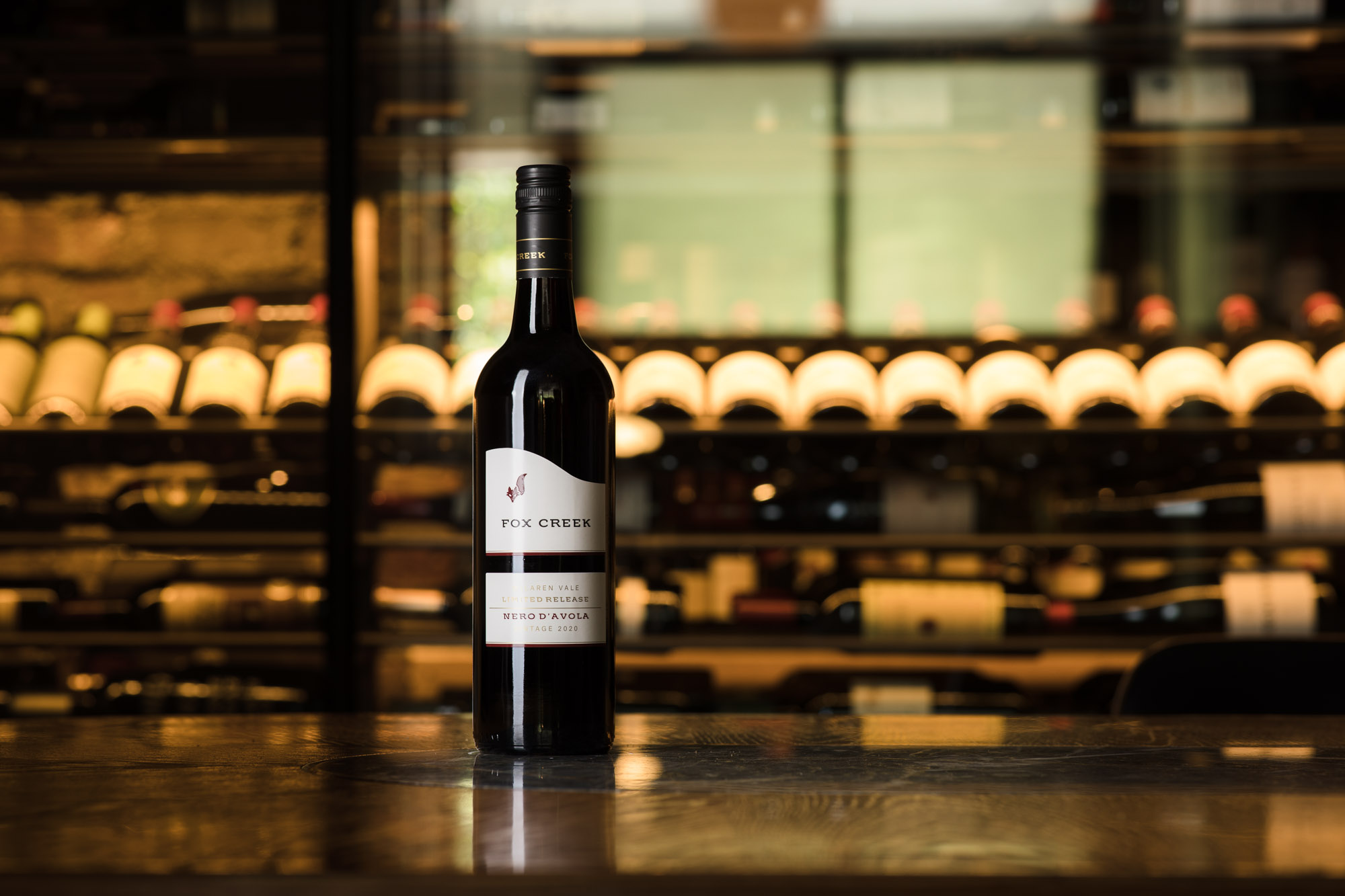 2020 Fox Creek ‘Limited Release’ Nero d’Avola, McLaren Vale $38
2020 Fox Creek ‘Limited Release’ Nero d’Avola, McLaren Vale $38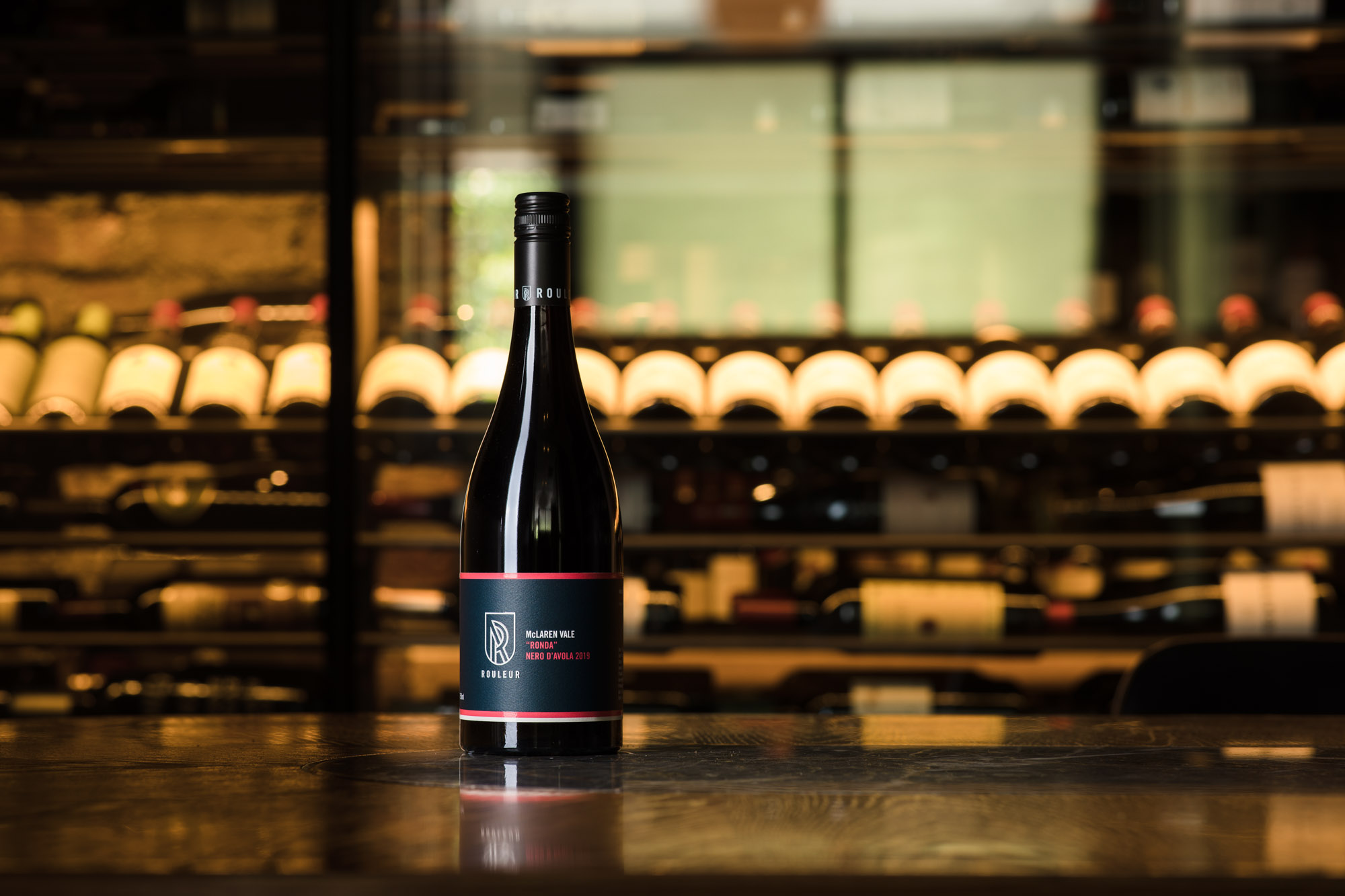 2019 Rouleur ‘Ronda’ Nero d’Avola, McLaren Vale $32
2019 Rouleur ‘Ronda’ Nero d’Avola, McLaren Vale $32 2019 Lino Ramble ‘Tom Bowler’ Nero d’Avola, McLaren Vale $30
2019 Lino Ramble ‘Tom Bowler’ Nero d’Avola, McLaren Vale $30 2019 Golden Grove Estate Nero d’Avola, Granite Belt $30
2019 Golden Grove Estate Nero d’Avola, Granite Belt $30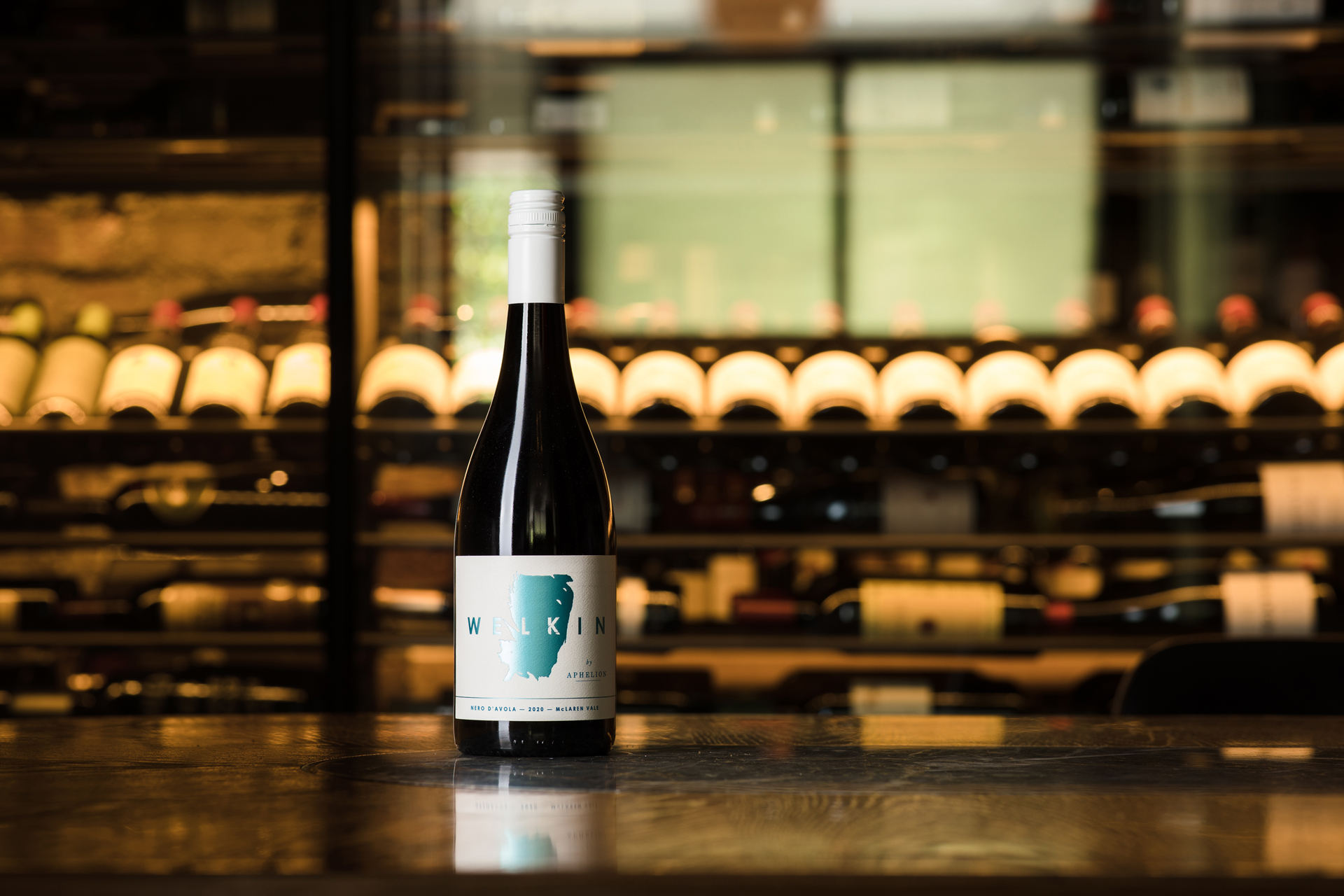 2020 Welkin by Aphelion Nero d’Avola, McLaren Vale $28
2020 Welkin by Aphelion Nero d’Avola, McLaren Vale $28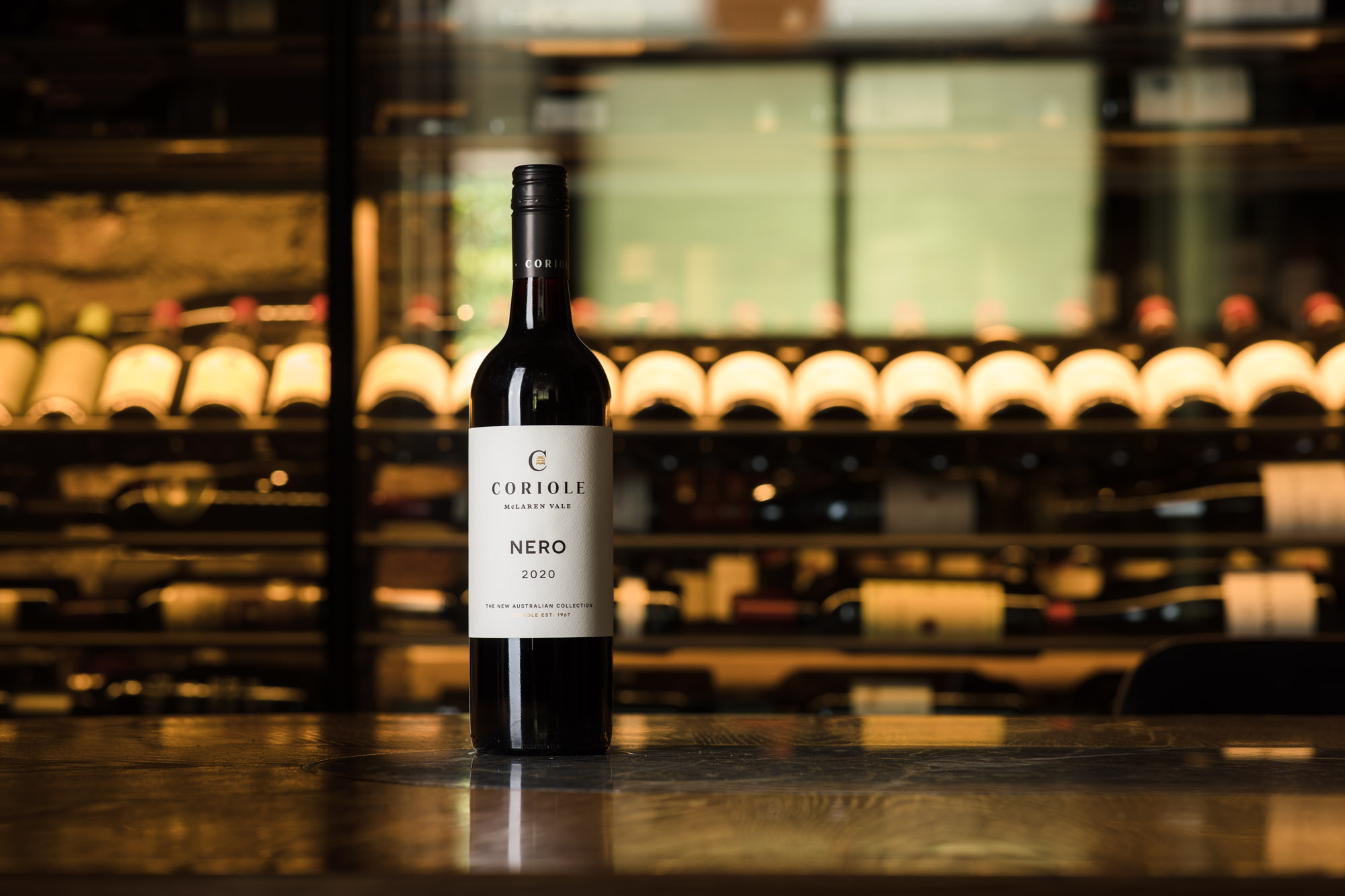 2020 Coriole ‘Nero’ Nero d’Avola, McLaren Vale $28
2020 Coriole ‘Nero’ Nero d’Avola, McLaren Vale $28 2019 Camwell Wines Nero d’Avola, McLaren Vale $35
2019 Camwell Wines Nero d’Avola, McLaren Vale $35 2020 Bella Luna Nero d’Avola, Victoria $21
2020 Bella Luna Nero d’Avola, Victoria $21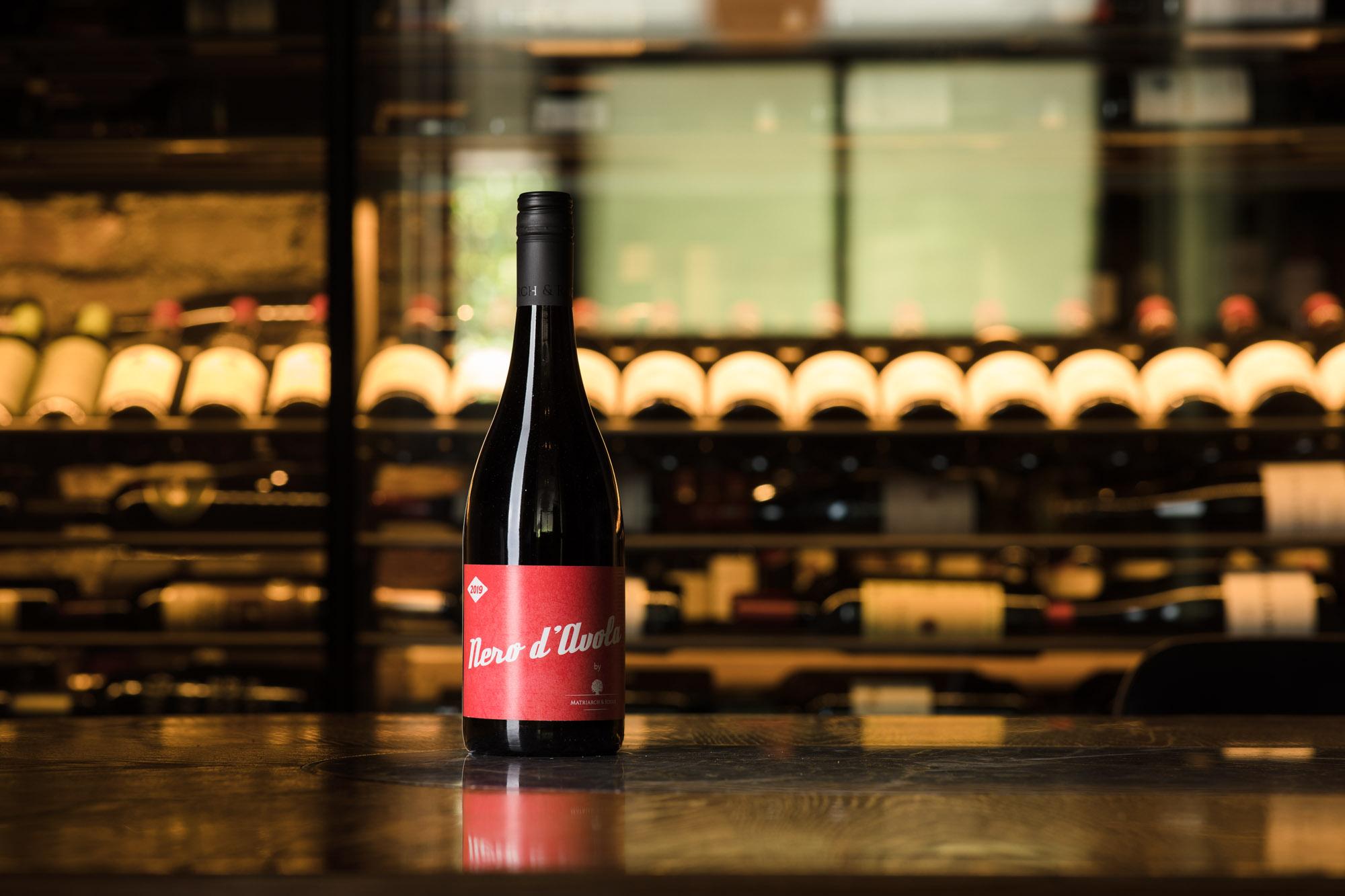 2019 Matriarch & Rogue Nero d’Avola, Riverland $22
2019 Matriarch & Rogue Nero d’Avola, Riverland $22 2019 Kirrihill ‘Piccoli Lotti’ Nero d’Avola, McLaren Vale $27
2019 Kirrihill ‘Piccoli Lotti’ Nero d’Avola, McLaren Vale $27 2018 Fox Gordon ‘The Dark Prince’ Nero d’Avola, McLaren Vale $30
2018 Fox Gordon ‘The Dark Prince’ Nero d’Avola, McLaren Vale $30 2018 Architects of Wine Nero d’Avola, Adelaide Hills $36
2018 Architects of Wine Nero d’Avola, Adelaide Hills $36 2019 Maan Wines ‘Hit Nero’ Nero d’Avola, McLaren Vale $30
2019 Maan Wines ‘Hit Nero’ Nero d’Avola, McLaren Vale $30 2020 Seppeltsfield Nero d’Avola, Barossa Valley $25
2020 Seppeltsfield Nero d’Avola, Barossa Valley $25 2019 Kay Bros Nero d’Avola, McLaren Vale $35
2019 Kay Bros Nero d’Avola, McLaren Vale $35 2018 Alpha Box & Dice ‘Siren’ Nero d’Avola, McLaren Vale $40
2018 Alpha Box & Dice ‘Siren’ Nero d’Avola, McLaren Vale $40 2018 La Prova Nero d’Avola, McLaren Vale $26
2018 La Prova Nero d’Avola, McLaren Vale $26 2019 Trentham Estate ‘The Family’ Nero d’Avola, Murray Darling $18
2019 Trentham Estate ‘The Family’ Nero d’Avola, Murray Darling $18 2019 George’s Folly ‘Unguarded Moment’ Nero d’Avola, Currency Creek $30
2019 George’s Folly ‘Unguarded Moment’ Nero d’Avola, Currency Creek $30 2020 La Bise Nero d’Avola, Adelaide Hills $33
2020 La Bise Nero d’Avola, Adelaide Hills $33 2019 Hand Crafted by Geoff Hardy Nero d’Avola, McLaren Vale $30
2019 Hand Crafted by Geoff Hardy Nero d’Avola, McLaren Vale $30 2019 Baileys of Glenrowan Small Batch Organic Nero d’Avola, Glenrowan $22
2019 Baileys of Glenrowan Small Batch Organic Nero d’Avola, Glenrowan $22